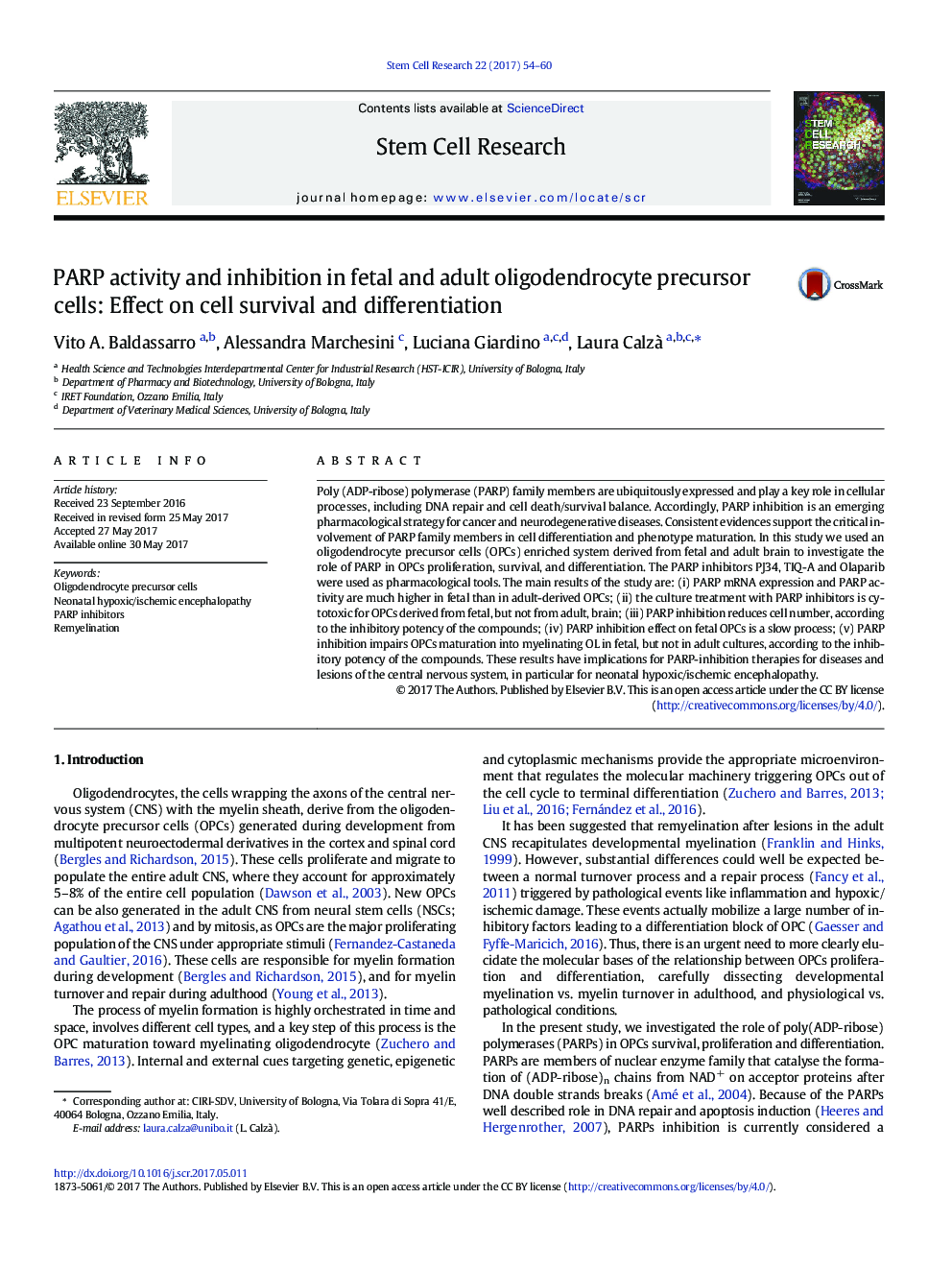| Article ID | Journal | Published Year | Pages | File Type |
|---|---|---|---|---|
| 5522810 | Stem Cell Research | 2017 | 7 Pages |
â¢Oligodendrocyte precursor cell (OPC) were derived from fetal and adult neural stem cells.â¢PARP activity is much higher in fetal than adult-derived OPC.â¢PARP inhibition is toxic for fetal, but not adult OPC, also impairing OPC differentiation.
Poly (ADP-ribose) polymerase (PARP) family members are ubiquitously expressed and play a key role in cellular processes, including DNA repair and cell death/survival balance. Accordingly, PARP inhibition is an emerging pharmacological strategy for cancer and neurodegenerative diseases. Consistent evidences support the critical involvement of PARP family members in cell differentiation and phenotype maturation. In this study we used an oligodendrocyte precursor cells (OPCs) enriched system derived from fetal and adult brain to investigate the role of PARP in OPCs proliferation, survival, and differentiation. The PARP inhibitors PJ34, TIQ-A and Olaparib were used as pharmacological tools. The main results of the study are: (i) PARP mRNA expression and PARP activity are much higher in fetal than in adult-derived OPCs; (ii) the culture treatment with PARP inhibitors is cytotoxic for OPCs derived from fetal, but not from adult, brain; (iii) PARP inhibition reduces cell number, according to the inhibitory potency of the compounds; (iv) PARP inhibition effect on fetal OPCs is a slow process; (v) PARP inhibition impairs OPCs maturation into myelinating OL in fetal, but not in adult cultures, according to the inhibitory potency of the compounds. These results have implications for PARP-inhibition therapies for diseases and lesions of the central nervous system, in particular for neonatal hypoxic/ischemic encephalopathy.
